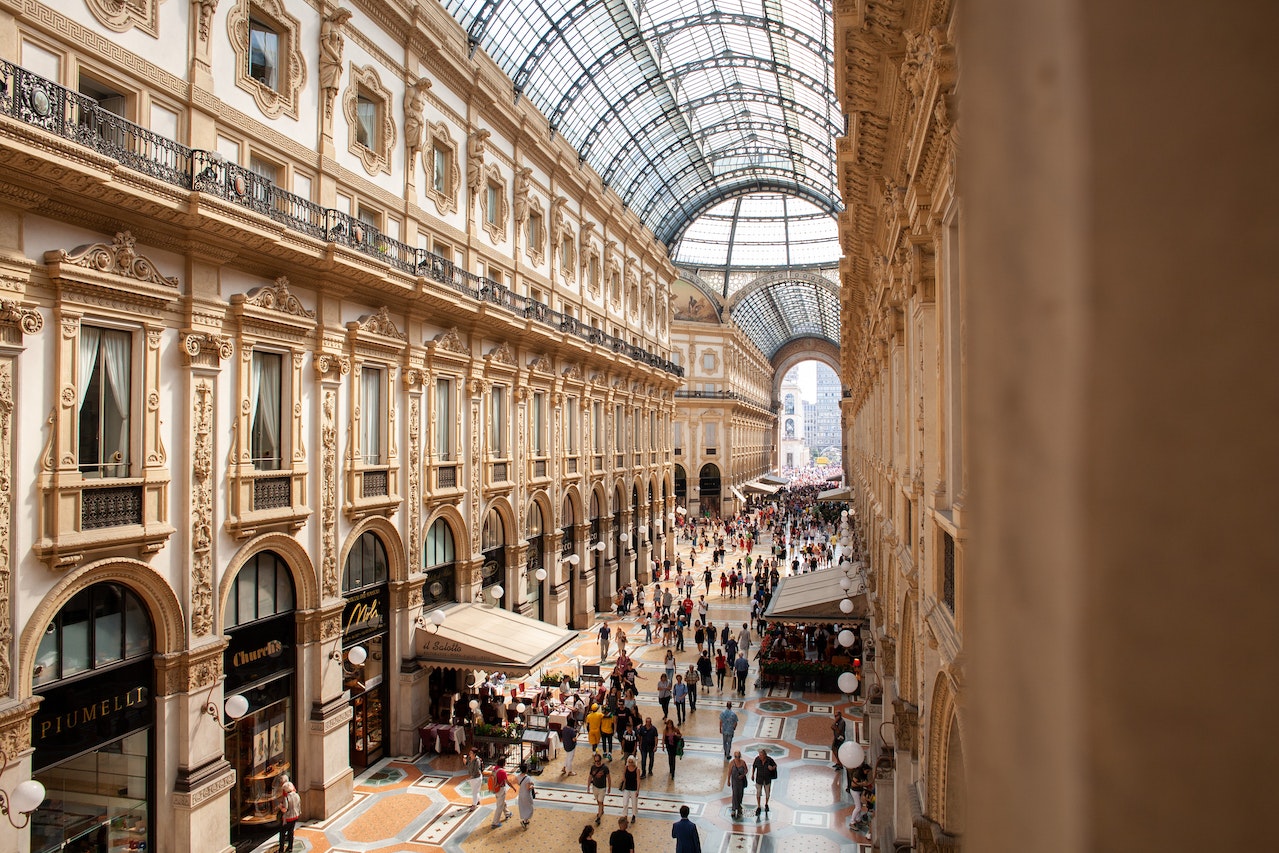The Role Of Architecture In Creating Inclusive And Accessible Environments
The goal of this article is to explore the role of architecture in creating inclusive and accessible environments and highlight the importance of designing spaces that are accessible to everyone. Architecture plays a crucial role in shaping the physical environment we live in.
Author:George EvansMar 13, 20231 Shares279 Views

The goal of this article is to explorethe role of architecture in creating inclusive and accessible environmentsand highlight the importance of designing spaces that are accessible to everyone.
Architecture plays a crucial role in shaping the physical environment we live in. Buildings, public spaces, and infrastructure are designed to meet your needs, provide shelter, and create a sense of place.
However, the design of the built environment can have a significant impact on the inclusion and accessibility of space.
Defining Inclusive And Accessible Environments
Inclusive environments are designed to accommodate people of all ages, abilities, and backgrounds. An inclusive environment allows people to feel welcome and valued, regardless of their physical, mental, or emotional differences.
Accessible environments, on the other hand, are designed to remove barriers and provide equal access to everyone, regardless of their abilities. An accessible environment ensures that people with disabilities can navigate and use space safely and comfortably.
The Importance Of Inclusive And Accessible Environments
Inclusive and accessible environments have a significant impact on the quality of life of individuals and communities.
A well-designed space can increase social interaction, promote independence, and improve health and well-being. Inclusive and accessible environments also help to promote diversity and social equity, ensuring that everyone has equal access to resources and opportunities.
The Role Of Architecture In Creating Inclusive And Accessible Environments - Meaning
Architecture has a critical role to play in creating inclusive and accessible environments. Architects are responsible for designing buildings and spaces that are safe, functional, and aesthetically pleasing.
However, the design of a building or space goes beyond aesthetics; it should also consider the needs of its users. To create an inclusive and accessible environment, architects should consider the following factors:
Universal Design
Universal designis a design approach that aims to create spaces that are usable by everyone, regardless of their abilities.
The universal design focuses on creating spaces that are flexible, intuitive, and easy to use. This design approach is not only beneficial for people with disabilities but also for people of different ages, cultures, and backgrounds.
Accessibility
Accessibility is a fundamental aspect of inclusive design. Architects should consider how people with disabilities can access and navigate a space safely and comfortably.
This includes providing accessible entrances, ramps, elevators, and accessible restrooms. The use of tactile signage, contrasting colors, and Braille can also enhance accessibility for people with visual impairments.
Safety
Safety is a critical aspect of any design. Architects should ensure that their design minimizes potential hazards and that emergency exits are accessible and easy to use.
In addition, designers should consider the needs of people with disabilities in emergency situations and provide emergency evacuation plans that are accessible to everyone.
Technology
Technology can play a crucial role in creating inclusive and accessible environments. For example, smart technology can help people with disabilities to control lighting, temperature, and other features of a building or space.
The use of assistive technology, such as hearing aids, can also enhance accessibility.
Accessibility In Architecture Examples
There are numerous examples of inclusive and accessible environments around the world. One example is the Seattle Central Library in the United States.
The library was designed with universal design principles in mind and includes features such as accessible entrances, a variety of seating options, and assistive technology.
Another example is the Mawson Lakes Library in South Australia, which was designed to be accessible for people with disabilities and includes features such as an accessible entrance, an accessible elevator, and adjustable height counters.
Accessibility In The Built Environment
There are numerous examples of accessibility in architecture around the world. Here are a few examples:
The Accessible Icon Project
The Accessible Icon Project is an ongoing effort to redesign the traditional accessibility symbol to better represent people with disabilities.
The new icon depicts a person in motion, using a wheelchair, and is being adopted by cities, organizations, and businesses around the world to promote inclusivity.
The High Line
The High Line is an elevated park in New York City that was designed with accessibility in mind. The park includes ramps, elevators, and accessible seating areas to ensure that people of all abilities can enjoy the space.
The Sainsbury Centre For Visual Arts
The Sainsbury Centre for Visual Arts in Norwich, England, is a museum that was designed with accessibility in mind. The building includes ramps, wide doorways, and accessible restrooms, as well as tactile signage and Braille labels for artwork.
The Ed Roberts Campus
The Ed Roberts Campus in Berkeley, California, is a community center that was designed to be fully accessible to people with disabilities. The building includes features such as accessible entrances, Braille signage, and adjustable-height workstations.

How Architecture Affects The Way You Feel || Environmental Psychology and Architecture
The National Museum Of African American History And Culture
The National Museum of African American History and Culture in Washington, D.C., is a museum that was designed to be fully accessible.
The building includes features such as ramps, elevators, and accessible restrooms, as well as tactile and audio descriptions of exhibits for people with visual impairments.
People Also Ask
What Is The Role Of Architecture In Creating Inclusive And Accessible Environments?
The role of architecture is to create spaces that are welcoming and accessible to everyone by prioritizing universal design, accessibility, safety, and technology.
How Can Architects Ensure That Their Designs Are Inclusive And Accessible?
Architects can ensure inclusivity and accessibility in their designs by considering the needs of people with different abilities and backgrounds, and by prioritizing universal design, accessibility, safety, and technology.
What Are Some Examples Of Accessible Architecture?
Examples of accessible architecture include the Accessible Icon Project, The High Line, The Sainsbury Centre for Visual Arts, The Ed Roberts Campus, and The National Museum of African American History and Culture.
How Does Universal Design Promote Inclusivity In Architecture?
The universal design promotes inclusivity in architecture by creating spaces that are designed to accommodate people of all abilities and backgrounds, and by prioritizing accessibility and safety.
Why Is It Important For Architects To Prioritize Inclusivity And Accessibility In Their Designs?
It is important for architects to prioritize inclusivity and accessibility in their designs to ensure that everyone has equal access to resources and opportunities, and to promote diversity, social equity, and community.
Conclusion
Inclusive and accessible environments are essential for creating a sense of community, promoting diversity and social equity, and improving the quality of life of individuals and communities.
Architecture plays a crucial role in creating these environments by designing buildings and spaces that are safe, functional, and aesthetically pleasing.
By considering universal design, accessibility, safety, and technology, architects can create spaces that are welcoming and accessible to everyone.
It is important for architects to prioritize inclusivity and accessibility in their designs to ensure that everyone has equal access to resources and opportunities.
In conclusion, the role of architecture in creating inclusive and accessible environments is vital. Architects have the responsibility to design spaces that accommodate people of all abilities and backgrounds, promoting diversity, social equity, and community.
By focusing on universal design, accessibility, safety, and technology, architects can create spaces that are not only functional but also aesthetically pleasing and welcoming to all.
The design of the built environment should prioritize inclusivity and accessibility, ensuring that everyone has equal access to the benefits of well-designed spaces.

George Evans
Author
George Anderson, an exceptional architectural designer, envisions and brings to life structures that transcend the realm of imagination. With an unwavering passion for design and an innate eye for detail, George seamlessly blends form and function, creating immersive spaces that inspire awe.
Driven by a deep appreciation for the interplay of space, light, and materials, George's innovative approach redefines the possibilities of architectural design. His visionary compositions leave an indelible mark, evoking a sense of wonder and transforming the built environment.
George Anderson's transformative designs and unwavering dedication continue to shape the architectural landscape, pushing the boundaries of what is possible and inspiring generations to come.
Latest Articles
Popular Articles
